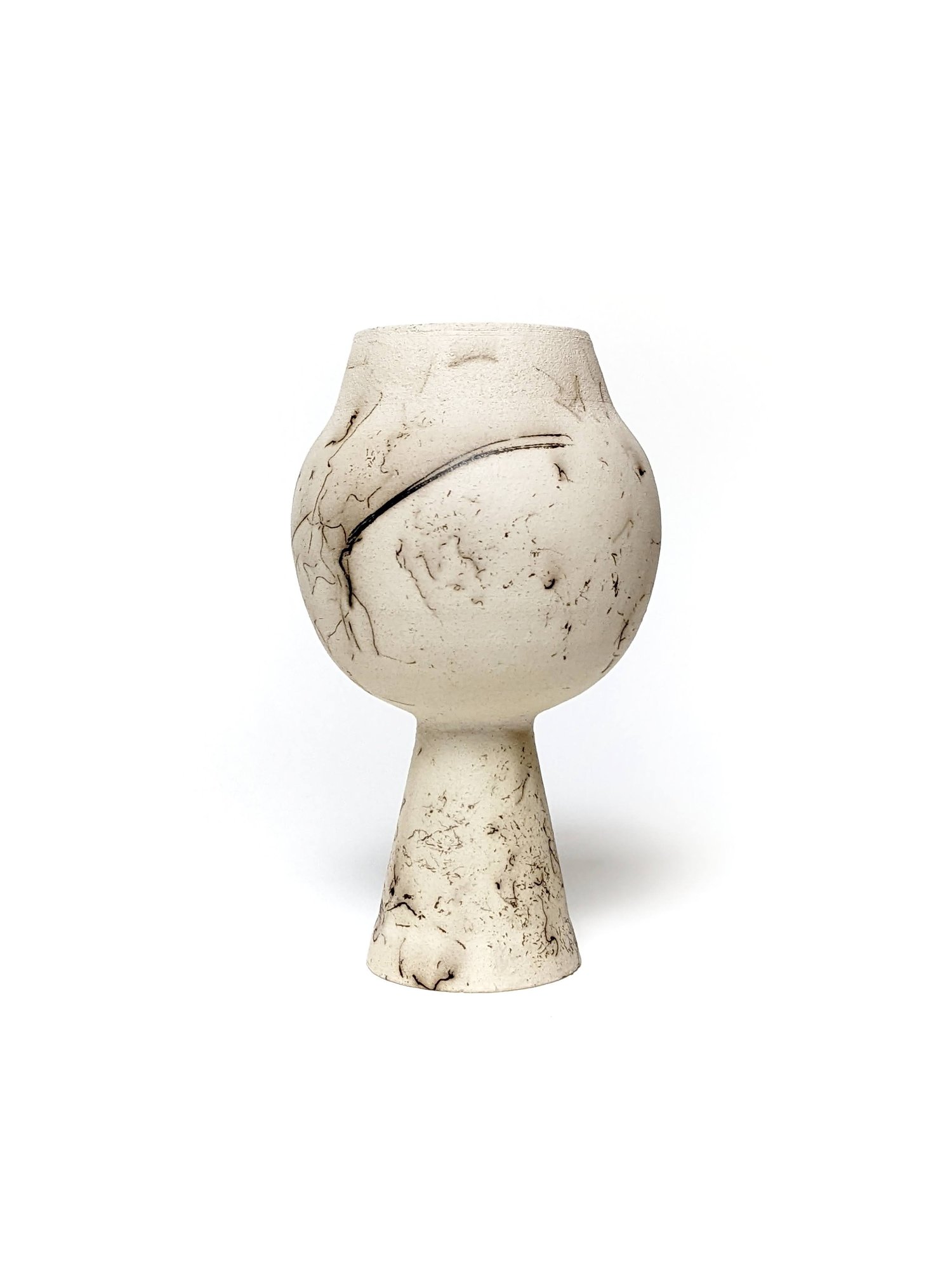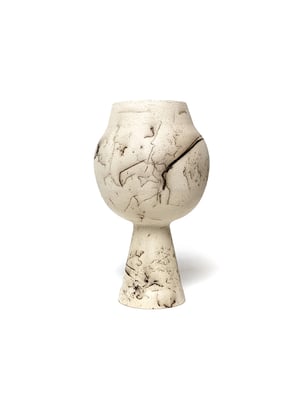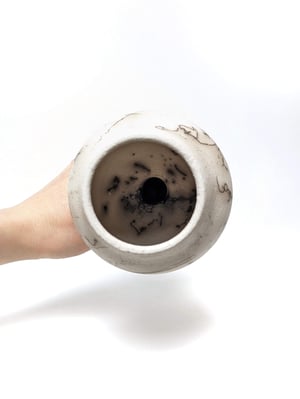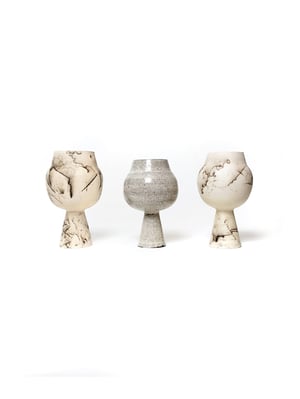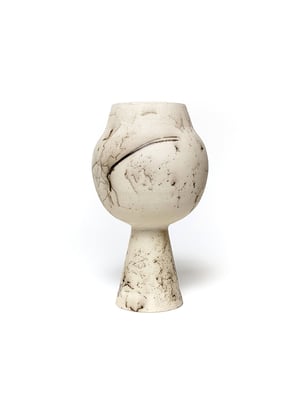Horse Hair Raku Kandila 2
$200.00
This is a newer kandila, with a different execution than prior versions. There is now a hole connecting the base of the pot's belly and its narrow pedestal foot, so dried flowers with long stems can be placed in the pot and stand up straighter by having more depth for the stems. Prior kandila were closed at the belly, with no interior connection to the foot. That being said, I generally do prefer these vessels empty as sculptural objects.
Approx 4”W x 7”H. PLEASE NOTE this is made with raku clay which cannot hold water. Must be kept dry. Keep empty as a sculptural object. More details below.
About the firing process:
This vessel is unglazed. The surface effects you see here were created with the horse hair raku method; to create this pot it was heated to 1300-1800 degrees in a raku kiln, then removed with long tongs and placed on a fireproof material on a table, allowed to cool just a bit until the temperature of the pot will accept the horse hair (too hot and it will burn off without leaving any black carbon markings / too cool and the hair won't burn at all).
There is a small window of only a couple minutes where the pot is the right temperature for strands of horse hair to be placed on the pots surface, which creates trapped carbon markings in the clay body as the hair burns onto the surface - creating the effect you see here, similar to marble. It's a process that is fast and stressful, and always surprising as there is not much control in the way the markings look once the hair hits the pot - as soon as the hair hits the surface at the perfect temperature, the clay seems to take hold of the hair where you just have to let go and watch what happens.
Due to the quick change of temperature between the heated kiln and the outside air, it's common for pots to break on their journey from kiln to table, so clays forumated specifically for raku can be used for thermal resiliency. This clay is more porous to help with thermal expansion and contraction, and therefore not water tight. Because of this, this vessel must be kept dry. It should be kept empty as a sculptural object.
